Insight Focus
Rains delayed cane harvesting. This has resulted in a 5% drop in cane crushing.
Guatemala Sugar Productions Dwindles
In February I predicted that Guatemala would produce around 2.47 million tonnes of sugar for the 2023/24 season, a 5% decrease on last year’s harvest. This past November, Guatemala’s southern sugar-producing region experienced more rain than usual. This unexpected rain delayed the harvest’s start for a few mills.
Guatemala’s sugar production has been relatively consistent over the past 10 years. Sugar production has remained flat due to the lack of land availability. Sugar competes with banana and palm oil in Guatemala’s southern region.
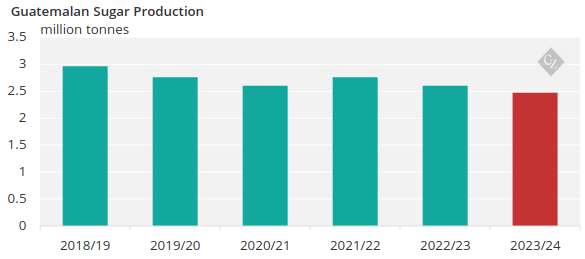
Unexpected Rain Decreases Harvest
Guatemala experiences only two seasons: a dry and a rainy season. The rainy season runs from May to October, while the dry season extends from November to April. The sugar harvest starts in Guatemala in November and usually ends in April.
As mentioned before, the unusual November rain delayed harvest for many mills. The rain doesn’t seem to have affected cane crushing, with cane yields on par with previous seasons.
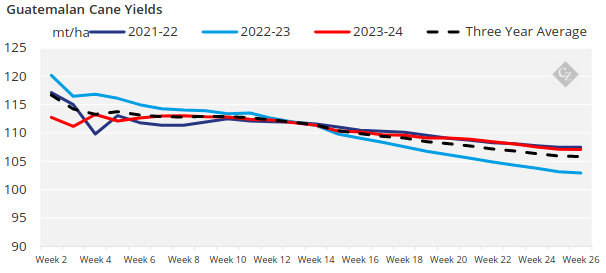
What does seem to be had been affected, though, are sugar yields and therefore sugar production.
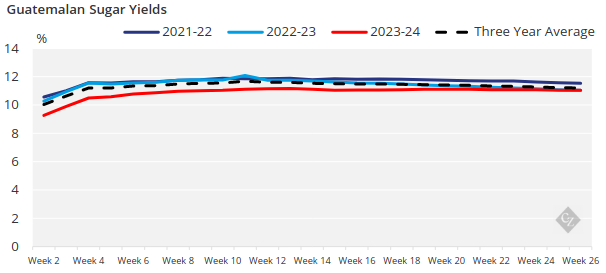
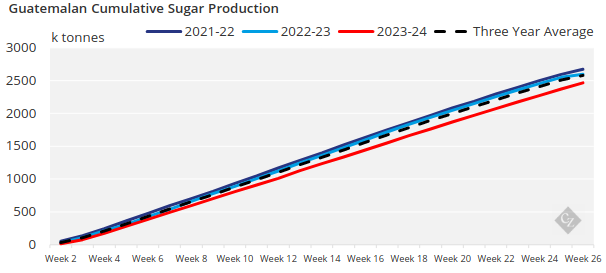
How Will This Affect the World Market?
Unlike most countries, Guatemala exports most of the sugar it produces. Guatemalan exports have remained between 1.75 million tonnes and 1.89 million tonnes over the last six harvests.
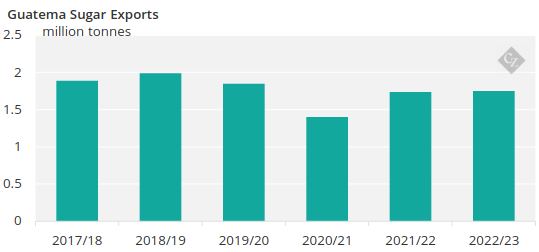
The Guatemalan harvest decreasing by 5% represents a total loss of around 130,000 tonnes of sugar. With Guatemalan mills having to fill a domestic quota before being able to export sugar, the 130,000 tonne loss of sugar means an equivalent loss in the world market.
With Mexico increasing its sugar imports from Guatemala and the US needing more sugar due to Mexico’s poor harvest, there will be even less Guatemalan sugar in the already tight world market.














